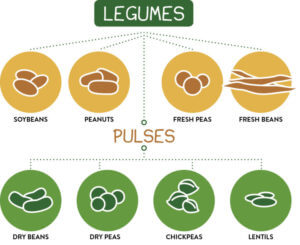
What Is a Pulse?
Pulses are the dried edible seeds of certain plants in the legume family. The United Nations Food and Agriculture Organization (FAO) recognizes 11 types of pulses grown worldwide. The four main types of pulses grown are dry peas, lentils, beans and chickpeas. Pulses are very high in protein and fiber, and are low in fat. Pulses are also nitrogen-fixing crops that improve the environmental sustainability of annual cropping systems. Pulses come in a variety of shapes, sizes and colors and can be consumed in many forms including whole or split, ground in to flours or separated into fractions such as protein, fiber and starch.
Other foods in the legume family like fresh beans and peas are not considered pulses – the term “pulse” only refers to the dried seed. Soybeans and peanuts are also not considered pulses because they have a much higher fat content, whereas pulses contain virtually no fat.
Compliments of 2018 Pulse Canada

How to Eat More Grains Including Legumes, Vegetables, & Fruits Plus a Day’s Menu
Whey eat more grains including legumes, vegetables, & fruits?
We hear about the health benefits of plants on a daily basis. Why? Because the key to eating more healthy is to incorporate more of these plant-based foods into your daily routine. Plant-based means that your meals are based around eating plants or that the majority of the foods on your plate are plants. Plants can include anything from vegetables, fruits, nuts, legumes (including pulses which are dried peas, beans, garbanzos & lentils) and intact grains such as brown rice, oats, buckwheat, quinoa and millet.
Plant-based eating patterns have been associated with improved health outcomes including:
- Lower risk of obesity, diabetes, and blood pressure
- Reduced risk of heart disease & stroke
- Increased energy levels
- Increased longevity
- Improved quality of nutrition – increased intake of fiber, potassium, vitamin C, plant protein, folate, zinc, iron, and magnesium, and less fat and over all calories.
Eat less animals:
As you are adding more plants, you are naturally cutting back on animal products.
A number of scientific studies from the world’s most well respected research institutes show that consuming animal protein such as meat, pork, chicken, cheese, eggs, & milk can be directly harmful for us and is connected to many conditions such as cancer, heart disease, alzheimer’s, type 2 diabetes, gout, & all types of arthritis.
The practice of consuming a plant-based eating pattern can also benefit the environment. According to the Food and Agricultural Organization, livestock was estimated to contribute to 18 percent of greenhouse gas (GHG) emissions. Production of factory farmed animals also uses much water for example 518 gal/pound of chicken vs 46 gal/pound of sweet potato. Eating less factory farmed animals can help to reduce GHG and also helps with water conservation.
Pulses on the other hand use atmospheric N2 and utilize it for growth meaning it helps the environment to reduce GHG production.
So How do I do this? Small steps…..
Below is a day’s meal make-over
Breakfast—Add walnuts to the morning fiber cereal; try quinoa or cold oatmeal instead; swap out cow for plant milk: flax, almond/cashew etc.
Lunch—legume-tacoBean or lentil tacos: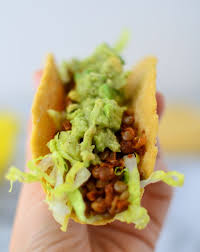
Throw a cup beans or lentils into a corn tortilla or two (16 grams of protein per cup cooked, of fiber, folic acid, iron and potassium also good sources of manganese, magnesium, copper, riboflavin and vitamin B6).
Add diced tomatoes, onions, shredded red leaf lettuce and a little sliced avocado or olives and you have a complete tasty meal.
Dinner:
Extend your dish with vegetables; they are also nutrient powerhouses and add color and texture to your meals. Steam leafy greens such as kale, collards, bok choy or broccoli for good plant sources of calcium. Serve a smaller portion of chicken or turkey breast (lower in saturated fat) and make room for black beans or navy bean soup (home-made, of course). Start your meal off with a nice, large salad or veggie soup. You can also throw your other food groups onto your salad or into your veggie soup. How easy is that!
Enjoy your plant-based meals more often and consistently and enjoy the plant-based eating pattern benefits. Help yourself and the environment and eat more plant-based!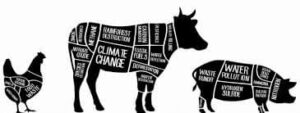
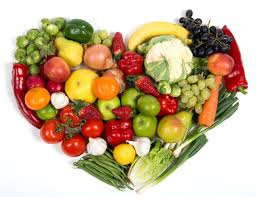
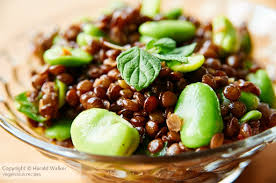
Choose a Whole Foods Plant-Based or Whole Foods Vegan Eating Pattern
So the other day I am at the gym and a personal trainer happens to tell me that I am the first vegan he has met that is not overweight (by the way I consider myself 95% vegan (you might call me a flexitarian or simply plant-based) which means I love food and if they accidentally put mayonnaise (because I have not seen vegenaise yet at a regular restaurant) on my veggie burger I will probably not be sending it back). I was shocked by that comment. Thinking back, a friend had told me she had wanted to introduce me to her vegan friend who lives nearby (and she is by no means thin) and my brother had made the comment that he had gone to the Vegan Festival where there was nothing but fried tofu burgers with doughnuts for buns….???
The previous brings me to the conclusion that now in addition to having the classifications of vegetarian, lacto-vegetarian, ovo-vegetarian, lacto-ovo vegetarian, pescatarian, and raw vegan, we need to add to the mix, definitions for plant-based and vegan. To what degree are the plants consumed being processed and how much of these processed foods are we eating on a daily basis?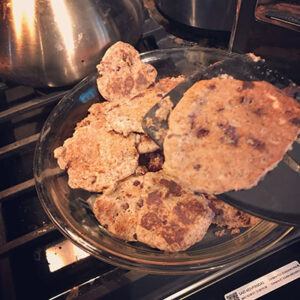
A whole foods plant-based eating pattern and a whole foods vegan eating pattern is what always came to mind when I thought of these two but technically a vegan will simply not eat animals or anything that comes from them and could possibly eat everything else under the sun, meaning a very high processed eating pattern that is not healthy.
The example of the best eating pattern is definitely either a whole foods plant-based or a whole foods vegan eating pattern for health. I recommend it for those that want to lower inflammation and want optimal health, those that would like to stop counting calories, those that have cancer or a family history of it, and those that have high cholesterol specifically.
But you have to know what you are doing in order to have that natural glow & energy and avoid becoming deficient in vitamins and minerals which may lead to sugar and other cravings (there are many vegans posts on desserts/sweets).
Meals need to be centered around whole, natural foods such as intact grains and legume-type grains and not sugared flakes for breakfast, fast-food burritos for lunch, and white pasta with a side of white garlic bread and with gobs of sauces on both for dinner with chips, donuts, candy, and other baked goods for snacks. (These meals ARE okay once in a while).
If you are interested in learning about Whole Foods Plant-based or Whole Foods Vegan Nutrition, come and see us. We are a plant-based office.
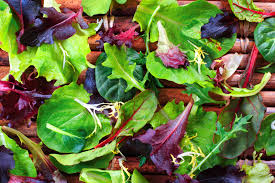
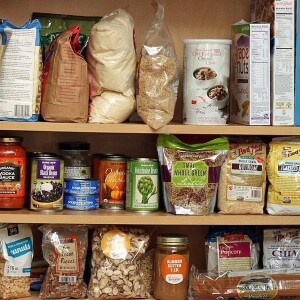
Set Yourself Up for Your Health and Weight Loss Goals
How do you know if you really are ready to make food changes?
To really reach your weight loss and health goals, set yourself up for success.
What does that mean?
Part of the answer is to only have only healthy food on hand.
You cannot reach for what you do not have.
Have family? Sit everyone down and discuss. The easiest way to get started is to decide what you will substitute.
Example: Barbara’s Puffins Cereal® vs Froot Loops®
70 calorie Vanilla Almond Milk or 25 calorie Flax Milk vs Whole Milk
Home-made pasta vs Top Ramen®
Discuss issues at the house.
Example: Your little one will not limit himself to 4 ounces of orange juice a day (which is a serving of juice). How about not buying it? Once again, if it is not there, he cannot reach for it. How about a glass of cold water with a splash of lemon and a fresh orange? It will be much more filling also with the high water content of both and the fiber in the orange (not to mention the other vitamins and benefits of the fruit).
Foods loaded with sugar and or/fat do not have to have a place in the day-to-day kitchen space unless they are not an issue for you which is not true for most of us…..they have no nutrients, are full of calories, and can take away from the food budget.
Example: Fruit drinks, sodas, chips, candy bars, cookies (approximate total $20.00 for the 5 items)– if you do not have them, you will have $20.00 instead.
Now, there is nothing wrong with the above foodstuffs once in a while. Consider them as such and buy them in single-size servings when you do want them.
Example: Craving ice cream…Walk over to the drugstore and buy yourself your favorite flavor. Sit, eat slowly, and enjoy. And do not fret as once you get home, you have all the fixings to continue on your healthy eating journey.

Eating Healthy on Planes and Their Terminals
June 7, 2016
Eating Healthy On Planes And Their Terminals
If you are a frequent traveler and even if you are not, you CAN make better food choices while at the airport and while on the plane.
While sitting at the gate, all of my future fellow plane-mates and I sat in a U-formation seating arrangement awaiting our plane. Looking around I noticed everyone was eating something but none of it was real food. The lady and her husband were munching on chips and soda. The couple on the other side was nibbling on burgers and everyone else had some kind of prepackaged, foil wrapped snack such as cookies, candy bars, and the gamut in between. I even found myself guilty as my family and I shared fat & sugar-laden peanut butter cookies and brownie crisps; at least we chose water. Then on the plane we were served two more rounds of foodstuffs. I walked off the plane thinking, how unhealthy !!! Every eating opportunity should be a time to give my body some of the nutrients it needs.
I was not going to let that happen to me again. Knowing that we as humans should be eating something every 3-4 hours, I planned ahead. On the return trip I combed all the stores and restaurants and came up with a healthy food choice list:
From home:
Baggie from home of raw nuts and dried fruits – the airport kind is not raw and that added fat is not healthy and could be rancid – you can eat any time and even throw onto your meal to increase satiety and vitamin/mineral profile.
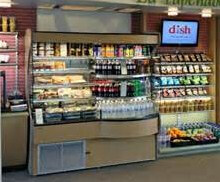
At the airport kiosks and shops choose:
- Whole fruit —A whole orange is very filling and will carry you a lot farther than the juice served on the plane—Benefits: water, fiber, vitamins, minerals, phytonutrients from colors.
- Cut up fruit or veggies—Convenience, hydration, fiber, vitamins, minerals, different phytonutrients from different colors are just a few benefits.
- Hummus- Eat with your fruit or veggies. It is a great source of healthy fat and it can help with satiety.
- Peanut Butter and Jelly - It is a perfect meal if you have a sweet tooth to begin with and it is very filling since it has carbohydrate, some protein, and healthy fats in it.
On the plane (will not see anyone’s potential pets on here by the way):
- Kale Salad
- Bean salad
- Water
- Tomato juice
- Coffee
- Tea
*You also buy healthy meal at airport such as Veggie Burger or Bean Tacos and eat on plane
So what did I end up eating on this second flight? I bought a large orange and peanut butter sandwich at the terminal kiosk and ate half of each while waiting for the plane. Around the the 2 hour mark I had the rest of the orange and sandwich with plenty of water and some hot black tea. I said no to the snacks offered. The sandwich was so filling it carried me over until I arrived home. With a little forethought and planning you CAN make better food choices at airplanes and their terminals.
